Learning Objectives
- How to publish a podcast
- The importance of a website/blog {video tutorials}
- How to publish a podcast
- Promotion — Audiograms, Trailers, Reviews {video tutorials}


The creation of a podcast involves a lot of moving parts but easy-to-use technology can make you your own podcast publisher.
However, those large digital audio files must first be uploaded to a podcast hosting service that creates the RSS feed (podcast audio files hosted on the internet), and then listeners can look in directories to find podcasts.
Let’s break it down.
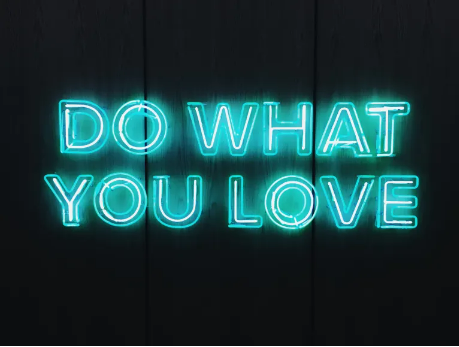
Discovering your podcast is one of the biggest challenges facing podcast creators, so it’s important to list your podcast in as many directories as possible.

Livewire Labs measures the number of new podcast episodes in a given period and top hosting companies by new episode share.
Just like a website needs a hosting service to store media files, your podcast needs the same thing.
A podcast hosting platform stores large audio and video files online for distribution and download to your audience and generates an RSS feed to Apple Podcasts and other directories.
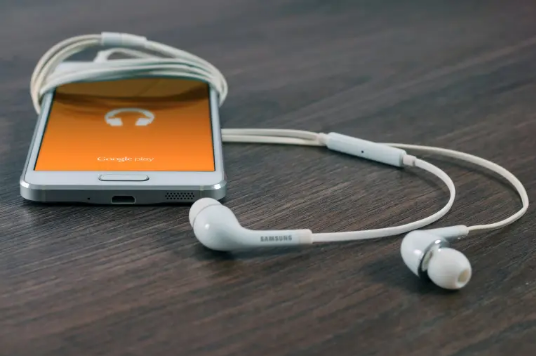
There are a lot of options for podcast hosting services; some are free and others have monthly charges for a variety of services.
You can get a sense of where people are publishing by looking at the stats provided by Podnews in how many podcasts switch their shows to a different service and where they go.
There are several factors to consider when selecting your podcast hosting service – but all will get you onto Apple, Google, and Spotify with an RSS feed. Instead, you might consider these other factors:
Yes – and a free host service may be all that you need, but be sure to review the rules. In some, episodes are deleted after 90 days, advertising may be added or there may be very little notice if a company goes out of business. One of the largest free host services is Spotify for Podcasters (formerly known as Anchor), but critics say many of those have podfaded – referring to when a show stops releasing new episodes.
Some hosts charge by how much you podcast and they have a storage cap, while others charge by download numbers. Paid host services may provide ad-free podcasts, automatic distribution to all podcast apps, or have detailed analytics; it depends upon your interests and what you’re willing to pay. Certainly use a paid service if you’re podcasting for your brand or business.
Check if there is good IT support and if you can easily migrate to another host if you are unhappy.
The Internet Advertising Bureau came up with rules on how to count podcast downloads, so companies who comply with these are certified, like the ones listed here. If a company is listed as “IAB Certified” it means “the podcast host thinks they are following the rules but nobody has checked,” says James Cridland of Podnews.
Some companies offer transcriptions, audio processing, the ability to choose advertisers, or video podcasting. But you do need to be careful and read the fine print. Podnews offers a look at unusual terms and conditions from podcast companies.

Before submitting the podcast to a hosting service you need to insert Metadata I.D. tags so the show becomes searchable in directories. Embedded within the MP3 tag is metadata with the show title, author name and show description. You can tag episodes within your media hosting service by using free tagging software or by simply using Apple.
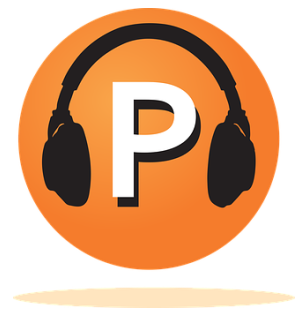
RSS stands for Really Simple Syndication or Rich Site Summary.
The feed is an XML programming code that contains the directory of your podcast where audio files are located on the internet. On web pages, the RSS feed is indicated by an orange logo.

Once you have subscribed to a podcast, the RSS feed sends new episodes directly to your digital device. Jamie Perkins writes in Medium: “RSS champions the little guy. It empowers the unheard voice, and has made a monopoly in podcasting impossible.”
Sometimes when an RSS feed doesn’t show up in searches or doesn’t work it can mean there’s a problem inside the RSS code that’s difficult to spot. The result is that you lose part of your audience with a broken feed. This can happen with a particular listening app even if Apple Podcasts accepts the feed.
Here’s where feed validators come in to test and help fix the error. They are designed for podcasters to point out “problems like missing enclosures, poor hosting and other issues specific to podcasting,” according to The Audacity to Podcast. They recommend Cast Feed Validator or PodBa.se Podcast Validator.
While most people listen to podcasts on Apple Podcasts, creators submit shows using Apple Podcasts Connect.
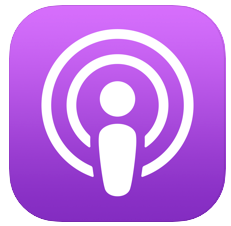
The Podcast Host offers tips for submitting podcasts. An RSS feed is created and then copied and pasted into podcast directories so people can find and subscribe to podcasts, getting new episodes automatically.
In 2023 Apple added nine new subcategories covering: Mental Health, Relationships, Self-Improvement, Personal Journals, Entrepreneurship, Documentary, Parenting, Books, and Language Learning. Each subcategory has its own charts, which display the Top Shows and Top Episodes available in a listener’s market.

It’s also worth noting that podcasts have two title areas for metadata; one in your hosting service and the other in the Apple metadata optimization area. Apple does not want episode numbers in titles, but only in this optimization area.
Here’s a look at how some popular podcasts add ID3 tags.
The most logical answer is when you’re ready with at least three episodes; it always takes far longer than you think to gather the content and master the technology.
It’s also wise to create a regular time of the day when listeners can expect new content each week or month. Research from Megaphone found that most podcasters publish their new episodes on Wednesday, Tuesday, and Thursday (in that order), between 2AM and 5AM. They found that when shows launch at midnight they get much lower downloads. While this is one theory to explain popularity it doesn’t really apply to mega-hit shows.
Technically, you can publish a podcast without having a website or blog and most people listen using the Apple Podcast app rather than on the website. Lime Link says between 10-40% of podcast listeners tune in from the show’s website.
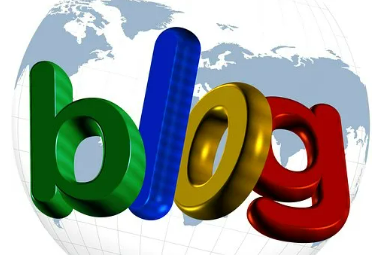
Websites can be easy to build yourself or you can hire someone. Find website builders here.
The primary benefit of having a podcast website is to develop a relationship with the audience. This is where listeners can get more information. Show Notes usually provide a summary of an episode’s main points, introductions and contact information for guests, and helpful information related to the episode.
A website provides an opportunity to ask for show support through monetary donations and show reviews.
Free transcripts of your podcast gives access to the deaf and hearing impaired communities as well as helping non-native English speakers.
A website makes it easier for search engines to discover your episodes and increase traffic to them. Transcripts also help search engines in discoverability.
Putting a transcript on a website helps other creators who do a podcast on a similar topic and journalists who may write about your podcast.
I have my students create podcast websites using WordPress.com and we use templates to simplify the process so they can concentrate on creating podcast content. Podcast Host offers a guide on using WordPress, one of many options now available.
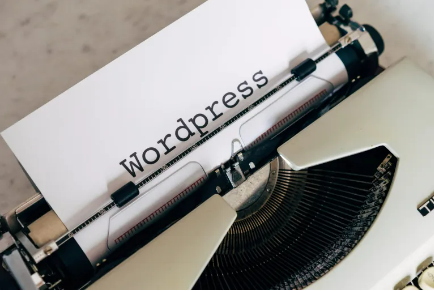
You can see stats for your WordPress site by logging in, going to the Dashboard, accessing Jet Pack and then Site Stats.
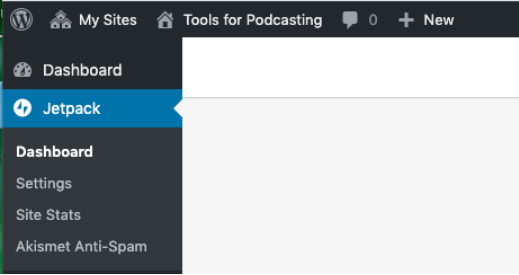
Accessibility for the 38 million Americans (about 1 in 20) who are part of the deaf and hearing-impaired community and for those with auditory processing issues is equally important.
Text helps them understand what they are hearing. “Subscribing to a podcast can be a nightmare,” according to writer Robert Kinget. He says most podcast websites don’t do a good job of making the “subscribe” link easily available along with a text description of the image, which is how screen reader technology works for those with vision loss.
It’s probably not the first thing on your mind if you’re just starting a podcast, but transcripts are important because they:
However, just 1.1% of active podcasts in 2022 had transcripts, according to 3PlayMedia.
With the explosive growth of artificial intelligence, there are dozens of ways to get free podcast transcriptions. However, while the transcript may be free, there are usually usage limits, and on several apps you cannot download the transcript itself unless you do a paid subscription. While transcripts can be a real time-saver, a human is still needed to check accuracy.
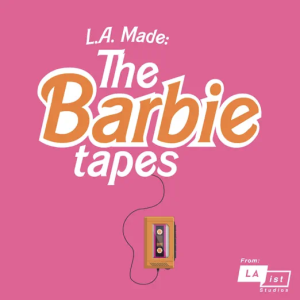
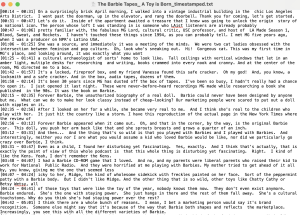
Transkriptor has some valuable tips for consistent style in transcripts.
There are also paid transcription services.
This is free and easy to use but you will have to manually correct words that the software creates in voice typing.
Use the Chrome browser to open a document on Google Docs.
It’s as easy as clicking on the “Start recording” button. Students who have used this app have been very pleased with the results as they were able to use the free basic program to meet their needs. The usage limit is 300 minutes of transcription a month and you can only download it as a text file (txt) in the free option. To download, click on the three dots in the upper right corner (next to the Share button) and chose Export.
Otter.ai operates on voice recognition algorithms that transcribe in real-time. A paid upgrade allows 1,200 minutes of transcription a month with downloadable formats in docx, pdf, and srt formats.
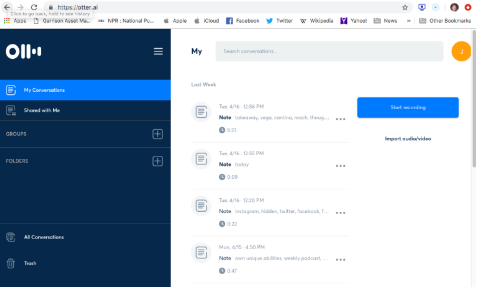
YouTube does free automatic video transcriptions by voice recognition technology.
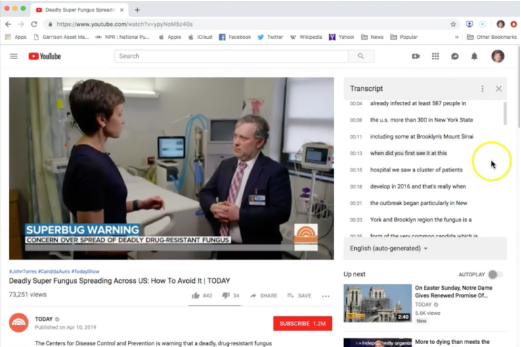
However, because YouTube only works with video files, you will first need to convert any MP3 audio files into a video file.
You can use free video editing software such as iMovie (for Macs), Windows Movie Maker (for PCs) or TunetoTube.com. Subscription-based software programs such as Adobe Premiere or Final Cut also convert audio to video files.
Follow these steps:
TunestoTube.com is a free tool to turn an MP3 audio file into a video.
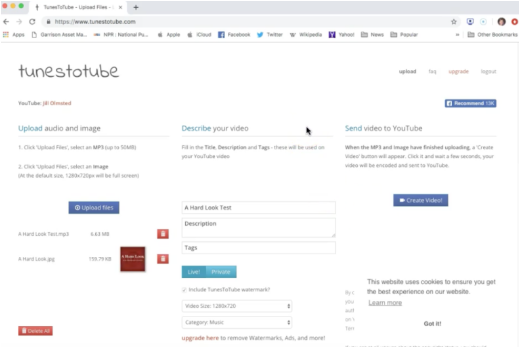
There is no one standardized style guide when it comes to creating a podcast transcript so take a look at how other shows do it and then create your own consistent rules for handling format, identifying names, sound effects, and music:
Jill: Why did you guys decide to get married in Cancun?
Colleen: We both love the ocean and wanted a destination wedding to bring everyone together.
Alyssa: It looks like the Mariachi band has arrived!
{:25 Music from guitars, trumpets, and violens}
Radio Public did a podcast about Helen Keller and included non-speech elements like the mood of music and use of archival audio clips.

The transcript was also available in American Sign Language.


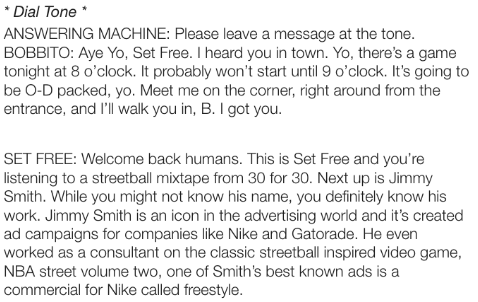
As you might expect, transcript accuracy improves with paid services.
Automated services such as Descript and Happy Scribe transcribe audio or video using voice recognition technology with charges by the minute or hour. Technology reporter Ren LaForme of Poynter.org is a big fan of Descript. You can find out other paid services from The Podcast Host.
Of course, there are always human transcribers where real people do the work. Sites such as Fiverr.com or Upwork.com can connect you to freelancers. Prices and quality will vary by the job.
It’s recommended that you install free embedded players on the website that automatically update with every new podcast episode. This tool allows anyone to listen or share your show outside of major listening apps like Apple or Spotify.

Many podcast host services offer their own native embedded player for free. For other options, Podnews show how to install players from platforms such as Spotify, RadioPublic, and Castbox.
A blog or website with good podcast Show Notes (also called ‘Episode Notes’) offer a summary of episode content – the ‘takeaway’ moments – that make the show memorable. Not only is this a good way to check you are delivering content worth listening to but it helps attract new listeners through search traffic.
Show Notes also offer links to resources, products or services, bios of the host and guest, and a way to give financial support or do a show review.



The popular business podcast, The Tim Ferriss Show, offers extensive links.
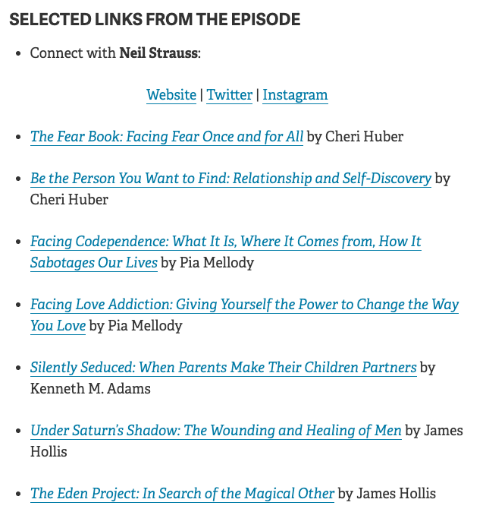
If you want to hire someone to write Show Notes they can be outsourced to mediasips or mabendroth15 on Fiverr.
In a world with millions of podcasts having a niche podcast can be a formula for success. But you can also reach a third of all podcast listeners by advertising on the top ten podcasts in the U.S., according to Edison Research.
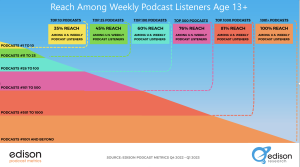
You can reach some 45% of weekly podcast listeners on the Top 25 podcasts, while the Top 100 reaches 60% of weekly podcast listeners.
Podcasts get a lot of love from their creators but it’s a challenge to get the word out to potential listeners with so many podcasts available.

Provide contact info, show bios, description, awards, show rankings, and social media.

The Podcast Host shares some tips and examples of podcast press kits:
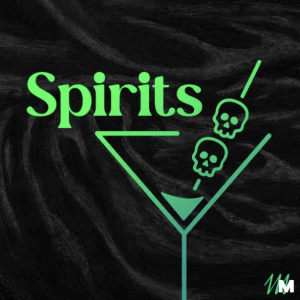

Rephonic released a Canva template to design a media kit.
Social media plays a big role in digital media and you can attract new audiences to your podcast by appealing to eyes and ears through audiograms – a still image converted into video and layered with a waveform and/or transcription.
Unlike video, audio is difficult to share easily so audiograms have become a popular way to entice listeners to try out new podcasts. CNN Digital’s Amy Eason told the Reynolds Journalism Institute that when putting together audiograms for social media platforms like Twitter, Instagram, and Facebook, her team looks for “eye-catching images” along with compelling audio in the 45-second range.
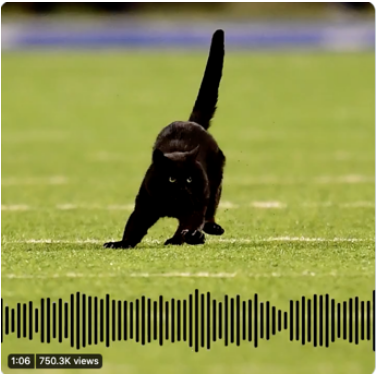
Some free audio-to-video creators include Audiogram, Headliner, and Waave. You’ll find a video tutorial in Ch. 8 on how to create an audiogram using free software from Headliner.
Many podcasts are borrowing promotion techniques from the movie industry by creating trailers to generate interest for a new podcast or new season. There are both audio and video trailers and they serve different purposes.
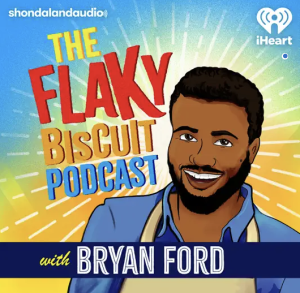
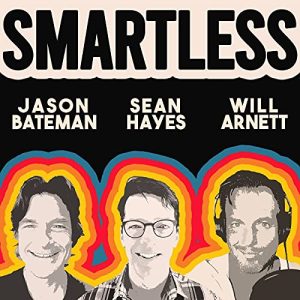
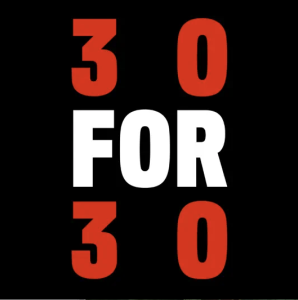
The Coming Soon trailer gets listeners excited about a new podcast or a new season, like The Flaky Biscuit, from award-winning artisan baker Bryan Ford. It comes from Shondaland, the storytelling company founded by producer/writer Shonda Rhimes.
SmartLesswith three polished entertainers launched their podcast with a trailer and became very successful with improvised conversation, comedy and a surprise mystery guest only known to one of the hosts.
ESPN Films and ESPN Audio created an audio trailer for their original audio documentaries.

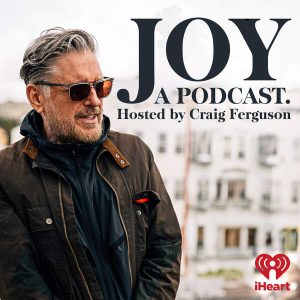 .
. 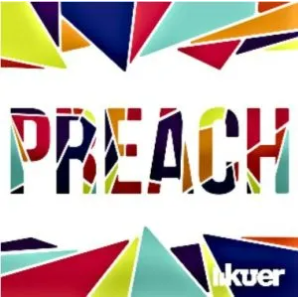
A Show trailer can also use clips to highlight the best parts from shows that have already been taped. Wilder brings the life and complicated legacy of Laura Ingalls Wilder of Little House on the Prairie books and TV show to life.
Joy, a Podcast Hosted by Craig Ferguson talks with notable guests from the worlds of entertainment, science, government, and more about where we can find joy in the world.
A faith podcast called Preach that talks about the messiness of religion. Season one opened with actor Rainn Wilson, famous for playing the salesman in “The Office” TV comedy, talking about his commitment to the Baha’i Faith.
It’s less common but a Teaser trailer comes at the end of a show to promote the next episode. Tink Media fouder Lauren Passell offers some tips on do’s and don’t for creating podcast trailers.
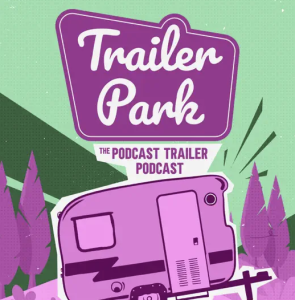
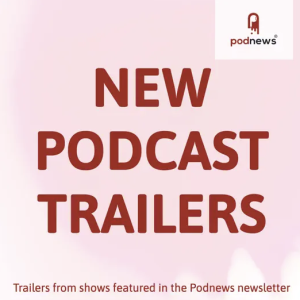
If you are looking for podcasts to listen to, or to promote your own show, get in touch with podcasts created to show off new trailers: Trailer Park: The Podcast Trailer Podcast, features one short trailer on each episode which is then discussed by hosts Arielle Nissenblatt and Tim Villegas, and from the creators of The PodNews daily newsletter comes New Podcast Trailers.
Pacific Content took a look at whether there’s any correlation between the availability of a trailer and podcast success. Dan Misener looked at 400 of the top shows in Apple Podcasts and found that 40% had trailers and that the shows near the top had a higher percentage of trailers across all categories. He cautions that correlation isn’t causation, but that “trailers are often a mark of quality.”
To keep track of top new podcasts, Misener built a podcast feed of only trailers. “Done right, listening to a podcast trailer is the audio equivalent of reading the back cover of a book: it’ll give you the gist,” he writes.
PodcastOne and Hubbard Radio launched a new true-crime podcast produced by award-winning journalists at WTOP in Washington D.C. The podcast had more than 2.3 million downloads in the first 10 days.
A video trailer teases the 10-episode series about a family held hostage and murdered inside a D.C. mansion that was eventually set ablaze. It’s called “22 Hours: An American Nightmare.”
You can find tips on “How to make a video trailer” outlined by the nonprofit RadioPublic.
After you’ve done a few podcast episodes, you might be interested in getting some feedback from your audience. You can do that informally by creating space on your website.
Or, you can make a more formal request during your show and ask for a review; it helps the audience feel like part of a community. “If you love this podcast, please leave a review in Apple Podcasts.”
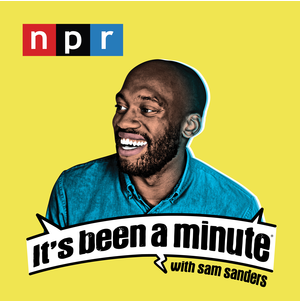
Here’s the way Sam Sanders, former host of “It’s Been A Minute,” made his request for reviews.
Reviews of podcasts are done most commonly on Apple Podcasts or on Podchaser – where you need to create a free account. For creators, it’s probably a good idea to explain briefly how to leave a review although it’s pretty straightforward using the podcast app.
Here’s the process for doing reviews on Apple Podcasts:
Leaving a review is a call-to-action for your audience, getting them involved, which can then lead to audience loyalty.
Here are some thoughts from podcasters on why they seek reviews.
Another option for publicizing your podcast is to host a live recording of the show. However, because most podcasts are recorded and edited and you can do as many re-takes as you want, a live event isn’t something to be taken lightly or done without years of experience under your belt.
If you feel ready to try, Suchandrika Chakrabarti writes that using quizzes, stand-up comedy, and backdrop images can enhance the audience experience.